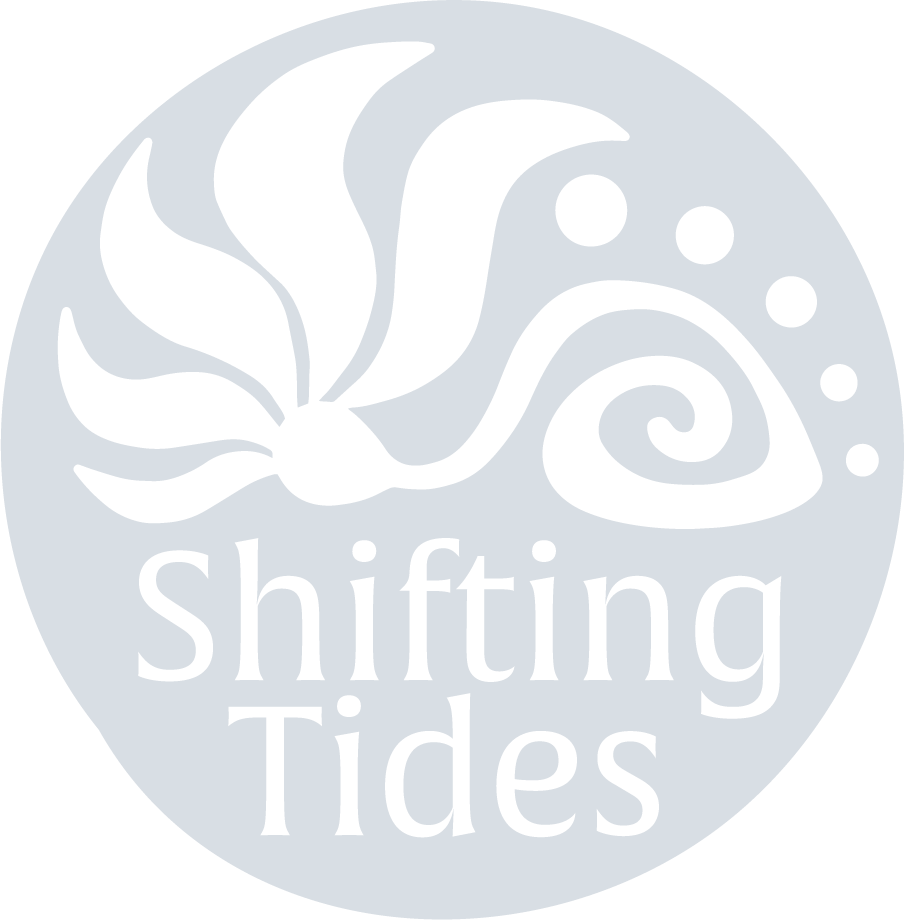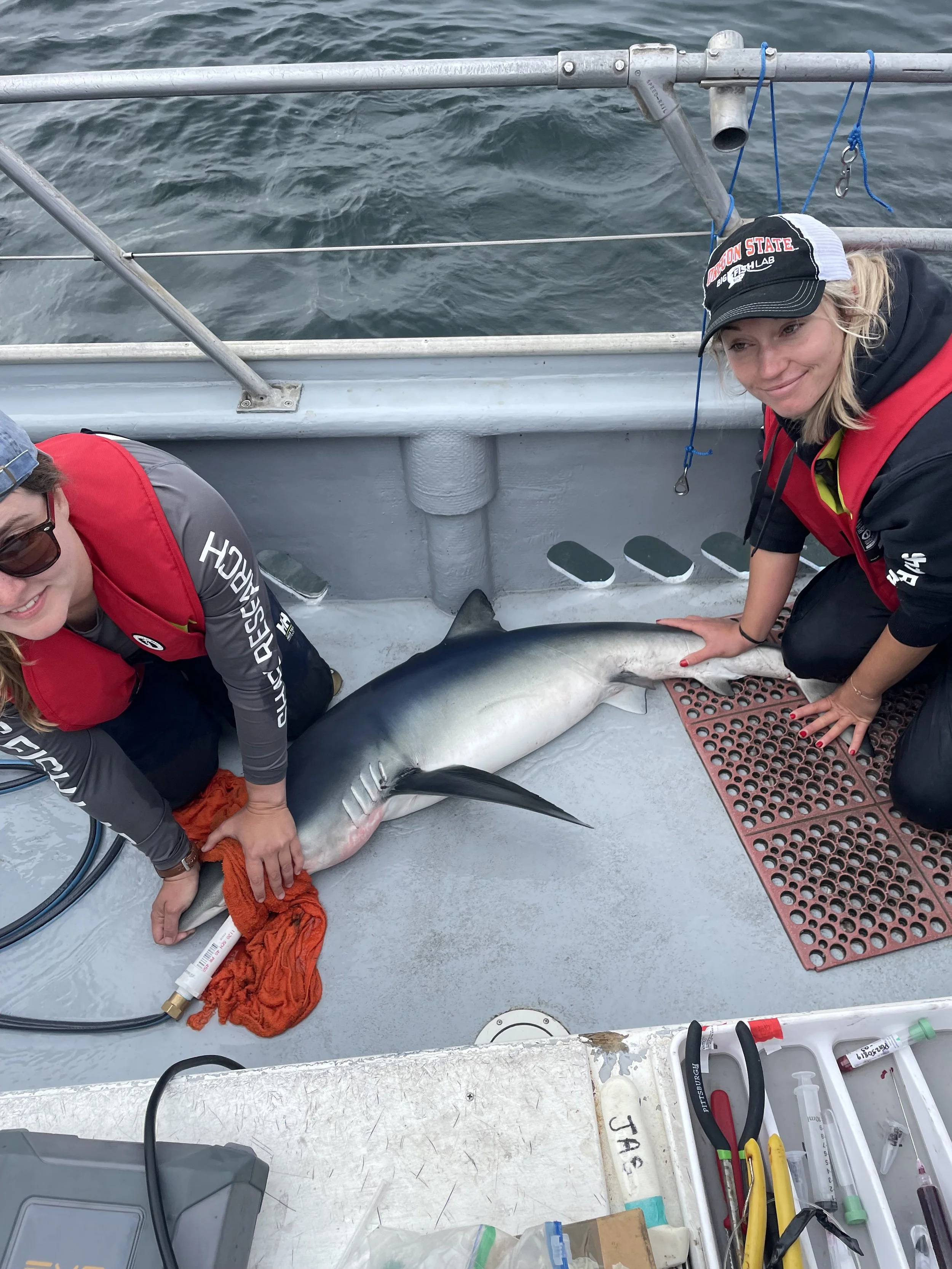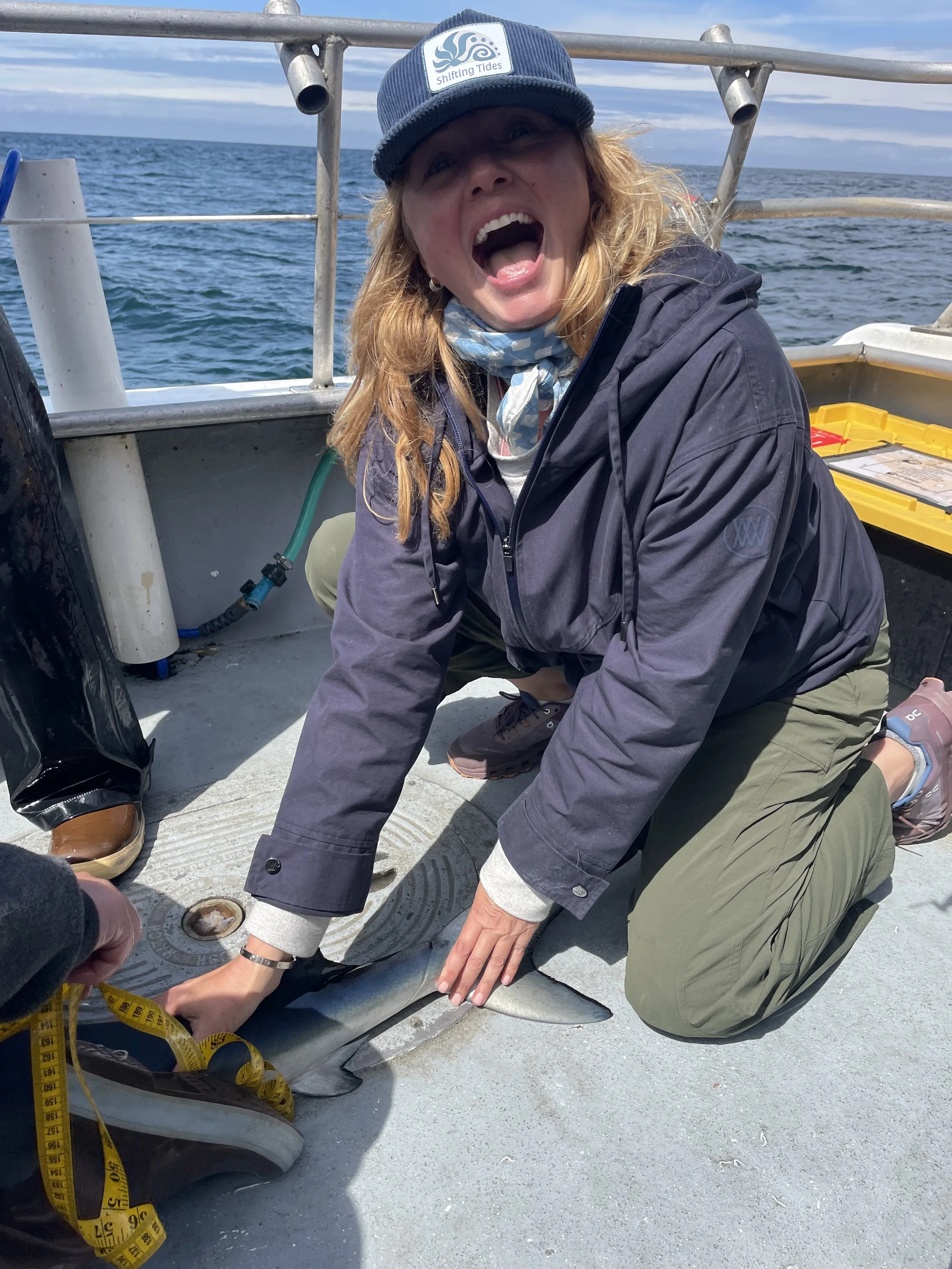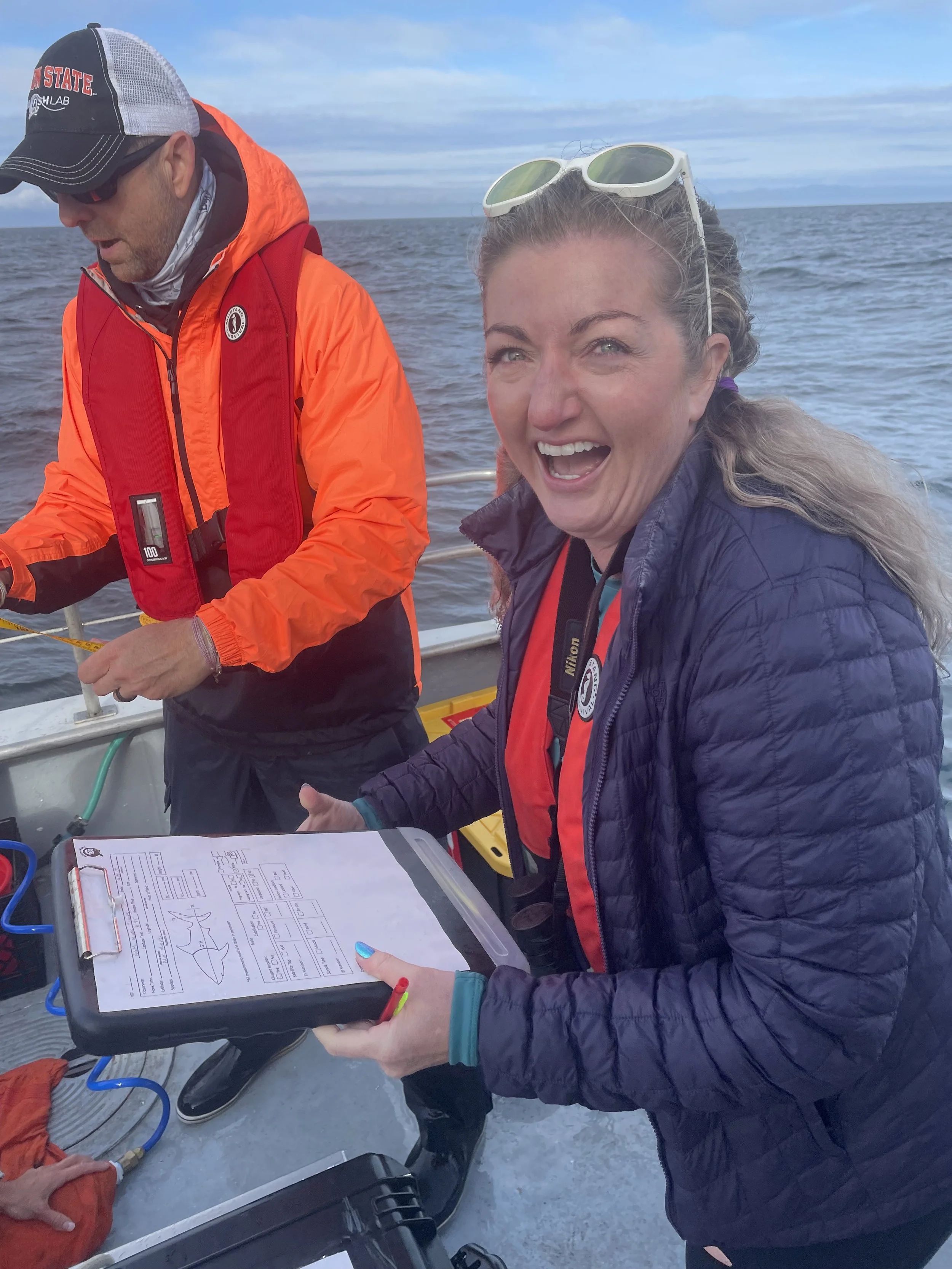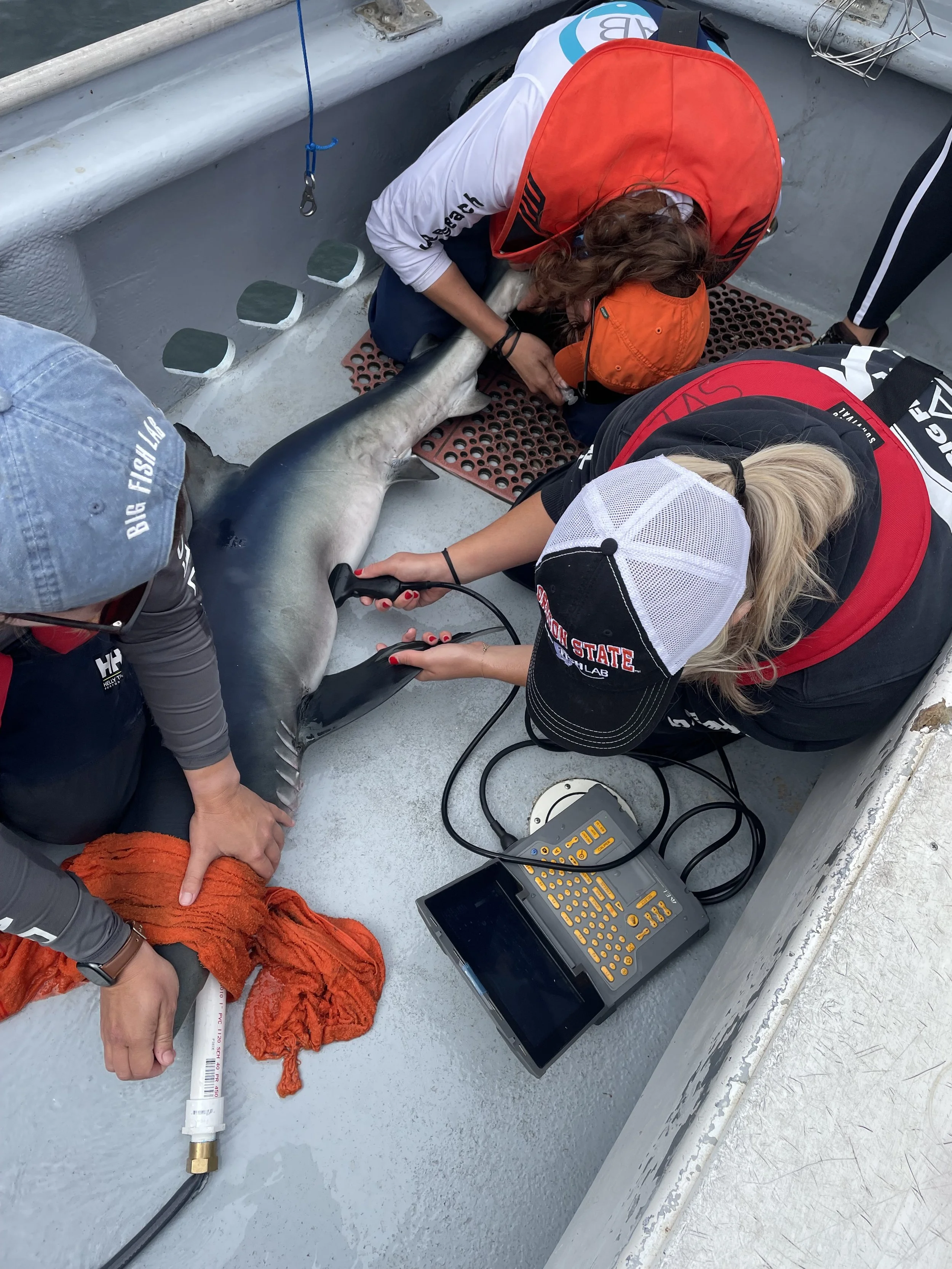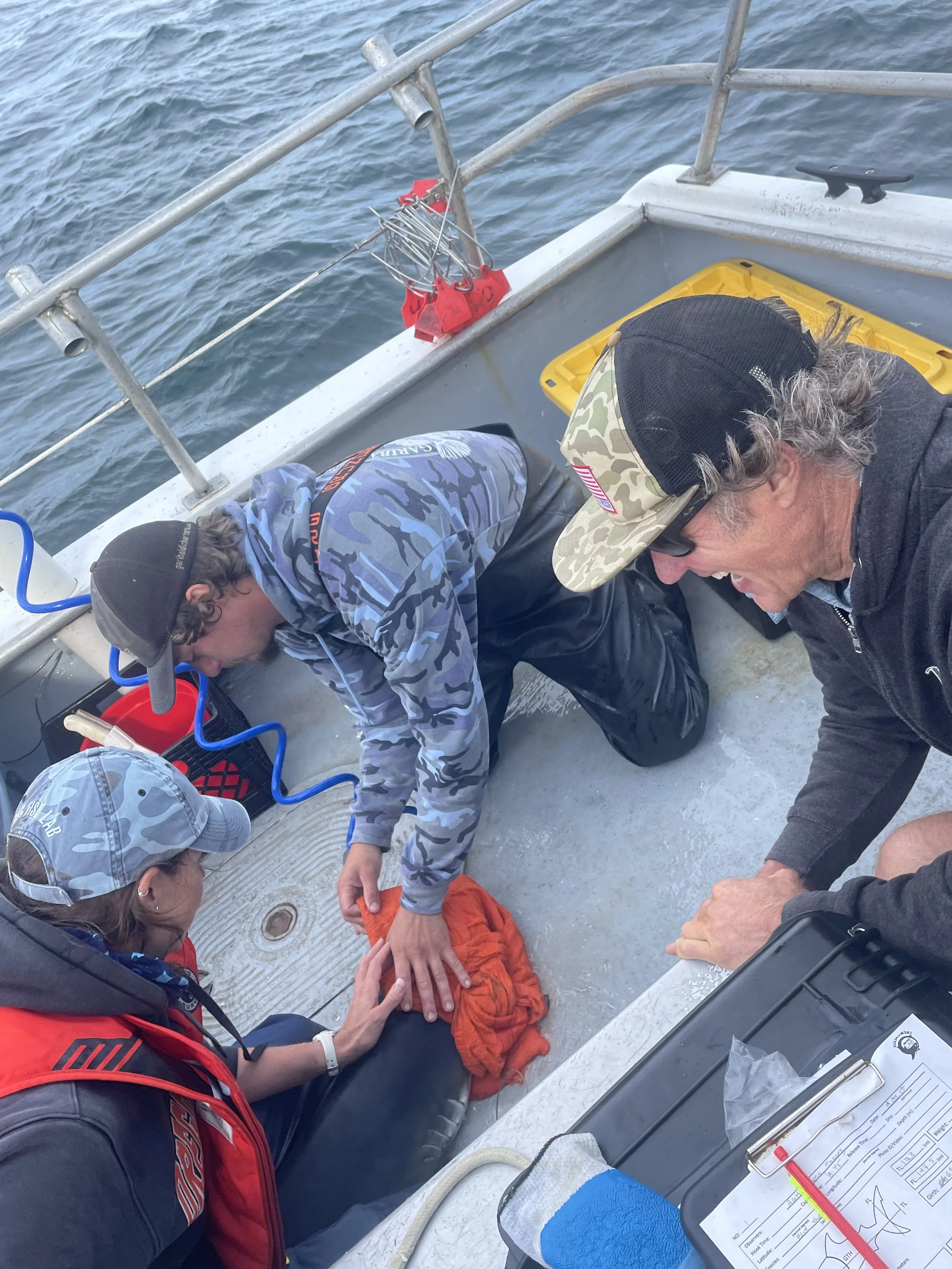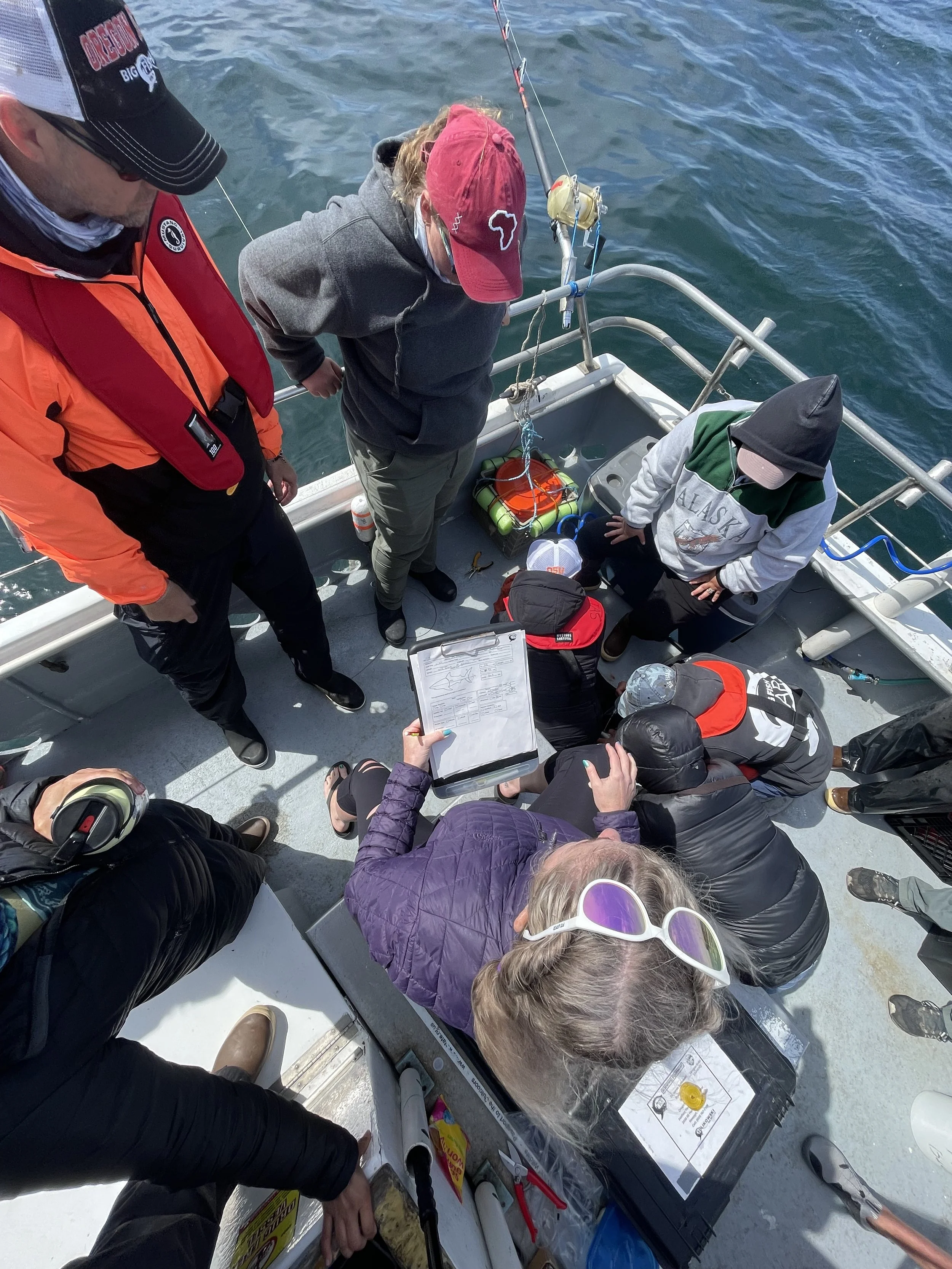Shark Eco-Tourism with The Big Fish Lab
What a day out on the water! Last year, we embarked on the adventure of a lifetime, one I never could have expected when starting Shifting Tides as a simple tidepool guide and marine science educator on the Oregon Coast.
After meeting Dr. James Sulikowski on a panel during Oregon Sea Grant’s State of the Coast conference, he scheduled a lunch with me to discuss something he had always wondered how to make possible on the Oregon Coast. What he pitched was a Shark Ecotourism Adventure on the Pacific, where everyday people could sign up for a spot on the boat to participate in citizen science and help shark researchers, in this case Oregon State University’s Big Fish Lab (BFL) - read more about them below - collect data on sharks along the Oregon Coast. It was the kind of excursion that was far beyond my wildest dreams, so I quickly reached out to my contacts. After much back and forth with Garibaldi Charters, a company I deckhand for and regularly host Women’s Fishing Trips with, we figured out all the nitty gritty details.
And what incredible shark excursions they were, a perfect blend of science, patience, and pure coastal adventure. It is always a little nerve wracking guiding trips that are truly at the whim of nature and whatever the ocean decides to throw your way on any particular day. Sharks aside, both days brought whale sightings, with numerous whales actually breaching on one of the mornings. Most people were ecstatic at that point, and while sharks were the goal for the day, they did not even matter anymore. People were happy.
The morning started early as we headed offshore, loaded with chum buckets, baited lines, briefcases of equipment, and plenty of excitement. The crew from the Big Fish Lab shared their unique focuses within their own research, as well as knowledge about shark biology and conservation, setting the stage for what we hoped would be a day filled with shark encounters. Still, as anyone who has been on the ocean knows, nature does not always follow our schedule.
After reaching our designated reef, the boat watched the researchers hard at work deploying baited lines and the chum bucket (full of Albacore carcasses), creating a chum slick to draw in sharks. We were told it could take up to an hour for the slick to travel and attract interest, so a long wait was anticipated. But within just fifteen to thirty minutes on both days, we had a blue shark on the line.
Under the guidance of the BFL scientists, sharks were safely reeled in and brought on board, with a hose running water over their gills so they could continue breathing while out of the water (like SCUBA for Sharks!). Participants helped collect real research data by measuring lengths, recording biological details, and learning how to handle sharks safely and respectfully. Everyone had a chance to touch the sharks’ smooth, steel blue skin and see firsthand the incredible detail of these animals up close. It was not just a wildlife encounter, it was a full citizen science experience.
During both expeditions, we caught an incredible range of blue sharks, from small, energetic males to large, mature females. Each shark provided valuable insights into the health and diversity of Oregon’s offshore population. Using Dr. James Sulikowski’s custom designed shark ultrasound, a groundbreaking, non invasive tool now used by scientists worldwide, we were able to perform real time reproductive assessments right on deck. This technology allows researchers to safely view internal anatomy and even confirm pregnancies without harming or stressing the animals. Seeing this process in action was a highlight for many attendees, offering a rare, hands on glimpse into cutting edge marine science and the innovative methods driving shark conservation today.
The data collected during the trip contributes to ongoing shark conservation research focused on understanding feeding behaviors (Dr. Alexandria McInturf), reproductive strategies (Dr. James Sulikowski), and migration patterns (Dr. Taylor Chapple). The Big Fish Lab uses this information to improve management and protection efforts for Oregon’s offshore species.
Days like this remind us why collaboration between scientists, local communities, and eco minded adventurers matters so much. Every tag, every data point, every shared story brings us one step closer to understanding and protecting these magnificent creatures that call the Oregon Coast home.
We cannot wait for the next trip offshore, and if you are lucky enough to join us next time, sign up for my newsletter to be the first to know.
THE BIG FISH LAB
The Big Fish Lab, led by Dr James Sulikowski and Dr Taylor Chapple, studies sharks and other large marine predators around the world focusing on their movements, behaviors and population dynamics. From South Africa to Australia to California, using state-of-the-art technology and techniques, we sample and electronically tag animals to gain insights into their lives when we aren’t there to observe them. In Oregon, we leverage partnerships with industry, management, science and local communities to study the sharks off our coasts to better understand the roles these animals play in our marine ecosystems and economies. Relatively little is known about how sharks affect our coastal ecosystems and communities in the Pacific Northwest, but we are changing that.
The Big Fish Lab (BFL) collaborates with local fishing charters to conduct research and support education in order to serve as a source of positive influence in shark conservation and management. This collaboration is built on a foundation of socially-just and sustainable solutions for managing sharks through a human-inclusive, citizen science approach. Their aim is to generate knowledge through the study of population dynamics, movement patterns and reproductive biology of these charismatic group of fish. This BFL team works to ensure a future with well managed shark populations exists, as sharks are vital in helping to regulate and balance the global climate and our ocean ecosystems.
THE RESEARCHERS
Dr. James Sulikowski
In addition to being the Director of the Coastal Oregon Marine Experiment Station, Dr. James Sulikowski is a marine biologist and professor at Oregon State University. He has 25 years of experience working with cartilaginous and bony fish. He has more than 100 peer-reviewed publications and his research has garnered more than $13 million in external grant funding.
James has appeared on numerous local and national television shows including the Today Show, Ocean Mysteries, the BBC, Discovery Channel, and National Geographic. Dr. Sulikowski has a bachelor’s degree in biology from Denison University, masters’ degrees in marine biology (Nova Southeastern University) and physiology (Depaul University), as well as a Ph.D. in Zoology (UNH).
Dr. Taylor Chapple
Over the past 15 years, Taylor has been studying sharks and other large marine predators around the world focused on their movements, behaviors and population dynamics. From South Africa to Australia to California, using state of the art technology, he electronically tags animals to gain insights into their lives when we aren’t there to observe them. At OSU, Taylor studies the sharks off our coasts and works with local communities to better understand sharks in Oregon. Relatively little is known about how White, Salmon and Sevengill sharks affect our coastal ecosystems, but Taylor and the BFL plan to change that.
Alex is a Cooperative Institute for Climate, Ocean, and Ecosystem Studies (CICOES) fellow working with Taylor Chapple (OSU), David Huff (NOAA Fisheries), and other mentors and collaborators to determine the foraging ecology and ecosystem impact of salmon sharks in the Pacific. Her research generally focuses on how marine organisms respond to biotic (living) and abiotic (non-living) environmental variables. Alex use this information to contextualize and predict behavior, movement patterns, and survival, mostly exploring this topic in threatened marine fishes. She is currently examining the foraging ecology of salmon sharks in Oregon and Alaska (including microplastic ingestion), the distributions of Chinook salmon and their overlap with salmon sharks, the movements of Pacific spiny dogfish, the social lives of sharks generally, and many more species and topics!

